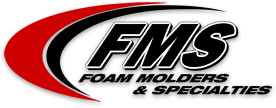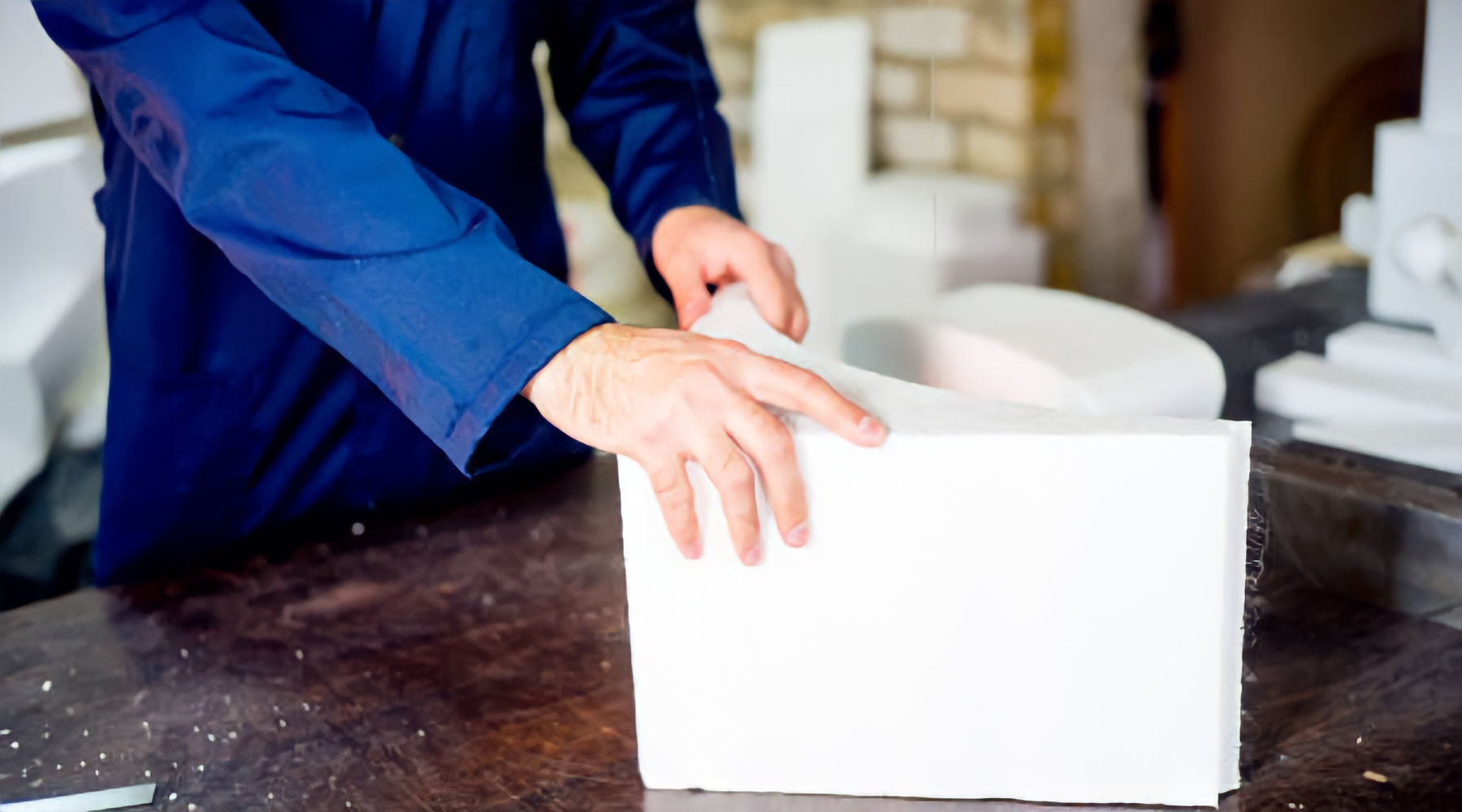Foam is all around us. We use many foam products in everyday life and don’t even notice them. Well, you’d certainly notice if it was not of good quality. If the packaging isn’t tight enough or your seat not comfortable enough or in similar cases.
Foam has been an industry favorite for many reasons. It’s lightweight, durable material that can be converted into various shapes and utilized in a wide variety of everyday products. It is also a cost-effective material and is easily available today in all shapes, sizes, and forms.
Foams have found use in sealing, soundproofing, packaging, insulation, liquid absorption, vibration dampening, filtering, and many other applications. Foam materials are in use today in a variety of industries too, not limited to aerospace, automotive, acoustics, consumer products, electronics, and healthcare.
However, it’s often the case that foam readily available in the market will not satisfy your needs, and you would require a custom solution. That’s where we at Foam Specialties come in. Through our custom foam fabrication, we can help you with the right material in the right sizes to meet your needs.
Understanding the foam fabrication process as well as the different materials is a great way to know how Foam Specialties can solve your manufacturing requirements. This blog will look at foam fabrication in detail and discuss how we at Foam Specialties work with foam products to meet specific use cases. Read on!
Why Use Custom Fabrication?
Foam is readily available in the market but getting the right material in the right dimensions for your needs may prove to be quite difficult. This is the case when you are manufacturing specific equipment and you want to use foam to keep the weight in check and get the desired results from your product.
Custom materials require tailored foam fabrication that meet your needs. A foam converter like our team at Foam Specialties will understand your needs, select the right fabrication process and material, create custom tooling specific to your product and then create parts according to the specifications at scale.
Custom fabrication is a common industry solution and this is no different when it comes to foam. Though there are additional costs initially, in the long run, custom parts will help you save costs, reduce labor, time to market, and build better quality products.
Custom foam fabrication is common in aerospace, automotive, packaging solutions, the hospitality industry, entertainment, and even in the medical industry. These industries need custom solutions that are not readily available in the market and also need to have specific properties to meet the customer’s specific needs.
What are the Common Processes in Custom Foam Fabrication?
Let’s take a quick look at some of the common fabrication processes that we follow for custom products.
Reaction Injected molding (RIM)
In RIM, reactive plastic liquids are mixed at high pressures and injected into the mold to react and produce the foam. It creates structural plastic foams quickly with very low energy consumption. Foam that is produced using RIM is lightweight, flexible, and strong. RIM is a great alternative to other methods such as injection molding.
RIM also has other benefits including better control over wall thickness, the ability to have inserts in the molds, and the opportunity to have more intricate surfaces. These parts can also be painted in mold and save a lot of time in the process through this. Laminating the materials also becomes easy through this process.
RIM is commonly used to create materials of polyurethane foam, polyethylene foam, polystyrene foam polyesters, polyureas, nylon 6, and other materials. Reinforcements can also be added to the mold to create stronger materials in the RIM process.
Foam In place
Foam packaging is one of the biggest markets for foam products. Foam in place is commonly used when you have to transport very fragile materials and standard foam packaging materials will not cut it. Foam in place works by injecting materials into a polyethylene bag. The mixture reacts and foams around the material to the packaged filling of the container. This method achieves a snug fit for the material to be packed, unlike any other packaging method.
By understanding the specific requirements, Foam Molders can design the foam using the right materials in the right density for foam-in-place packaging. Given the lightness of the foam, the overall package weight does not increase by much even with foam-in-place packaging. Foam-in-place can also be used in other areas where a specific area needs to be filled with the foam but the parts are not detachable. The foam cushioning that foam-in-place provides is one of the reasons why it has immense popularity in the custom packaging industry.
Casting
Closed cell foams are excellent materials for casting. Using the right molds and materials, foams can be cast at comparatively lower temperatures to produce lightweight and durable materials at a low cost.
Processes such as lost foam casting are used to create complex shapes using foams to be used as parts in machinery and equipment. Foam casting can also be used in the entertainment industry to create objects that can be painted and used as props or artifacts. Both closed-cell foams and open-cell foams can be cast.
There are several other processes that Foam molders rely on to produce parts that are of use in various industries. Custom molding solutions often mean that a combination of processes will have to be used to create the desired parts. We understand the needs, design the processes and molds and then create the foam parts as per the design requirements using these processes.
Based on the types of foam and the use, the processes may vary. Methods such as die cutting, water jet cutting, and hot wire cutting are commonly used for foam cutting.
What Are Some of the Specific Applications for Specialty Molding?
We have worked with a variety of foams and a wide range of industries to provide custom solutions. Some of these solutions showcase our breadth of experience in the industry.
Bone Growth Stimulation
The client was a manufacturer of medical devices that assisted in providing bone growth stimulation in patients with non-union fractures (Fractures that are not healing naturally despite casts and screws/plates) and for those in recovery after spinal fusion surgery. This device delivers pulses of electromagnetic waves or ultrasound waves to the region with the unhealed breakage. This promotes bone growth and helps heal the area faster.
The device had to be lightweight and strong and also had to contain inserts. The device also had to be capable of being attached to other assemblies such as a power source. Our design team worked closely with the client to design a foam-based product that helped many patients heal from complex fractures through bone growth stimulators.
Shower Transfer System
These are integral to people with disabilities as well as people in assisted living facilities. The transfer system allows the person to remain seated while moving in and out of the shower or bathtub. Using silicone and latex-free materials that are bacteria and fungal-resistant, we came up with foam solutions to build transfer systems.
Padded cushions were needed for such systems which had to be created using advanced processes. They also had to be durable to withstand repeated use. Our team designed foam products that worked for these needs.
Headrests and Cushions
Headrests, cushions, and mattresses are some of the most common uses for foam products. We work with many clients in the entertainment industry to create semi-rigid, flexible foam products that are strong and also provide sufficient comfort to be used in these products.
Car headrests, spa cushions, floats, parts for theme parks- we have built all these using various types of foams and for use in specific situations.
Artificial Trees
This was certainly one of our more interesting and challenging works. We had to create artificial palm trees to be placed on roadsides along with actual palm trees. We worked diligently with a great deal of attention to detail to create molds and foam parts as well as to paint them to ensure that the palm trees looked real and could pass the test if placed anywhere.
Conclusion
Custom foam fabrication is highly in demand today. As manufacturing processes become complex and we are designing more sophisticated products with a ton of parts, managing durability, quality and weight becomes a major issue. Custom foam products bridge this gap by producing parts at scale that ate durable and lightweight.
Foam Molders have vast experience in a variety of materials such as urethane, polyethylene, polystyrene, and a host of processes such as CNC, compression molding, RIM, and foam in place to design parts that fit the needs. Get in touch with us today to get your process started!

